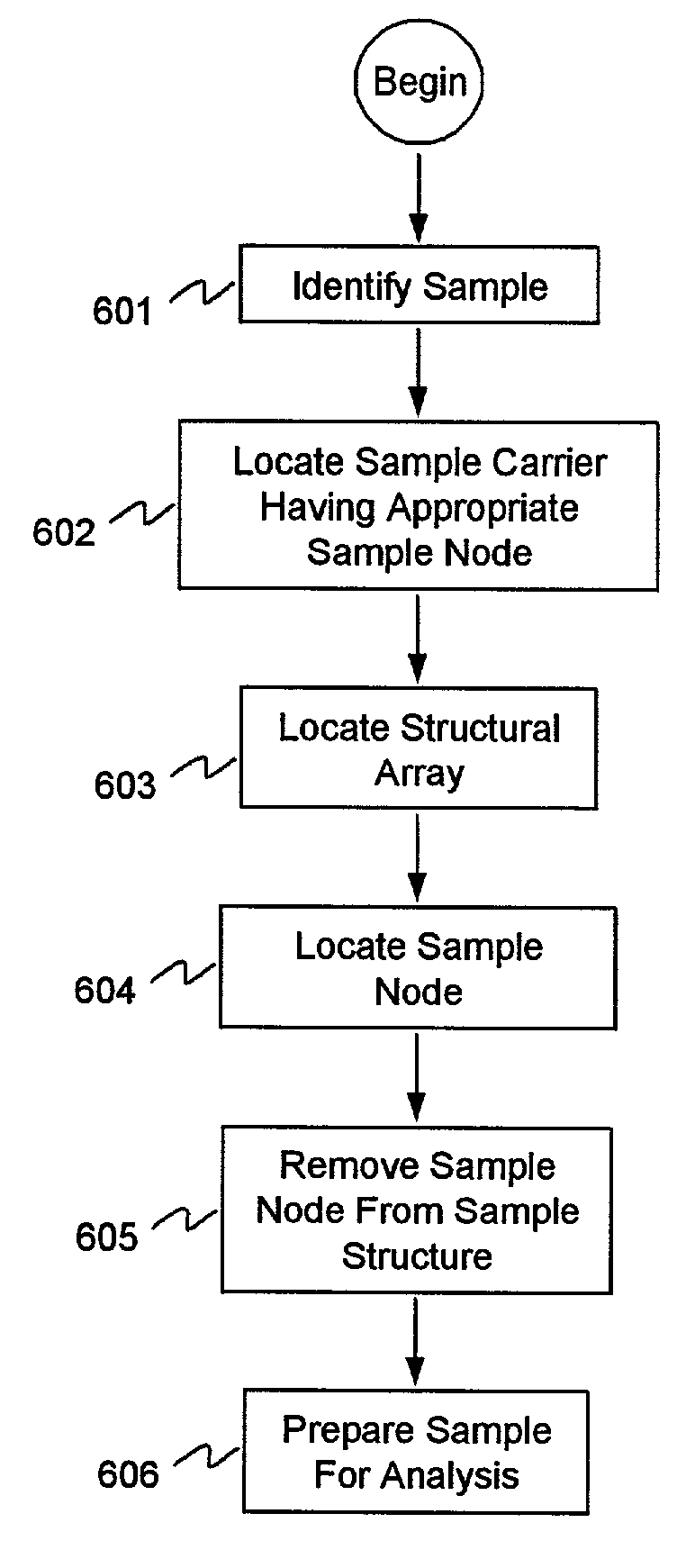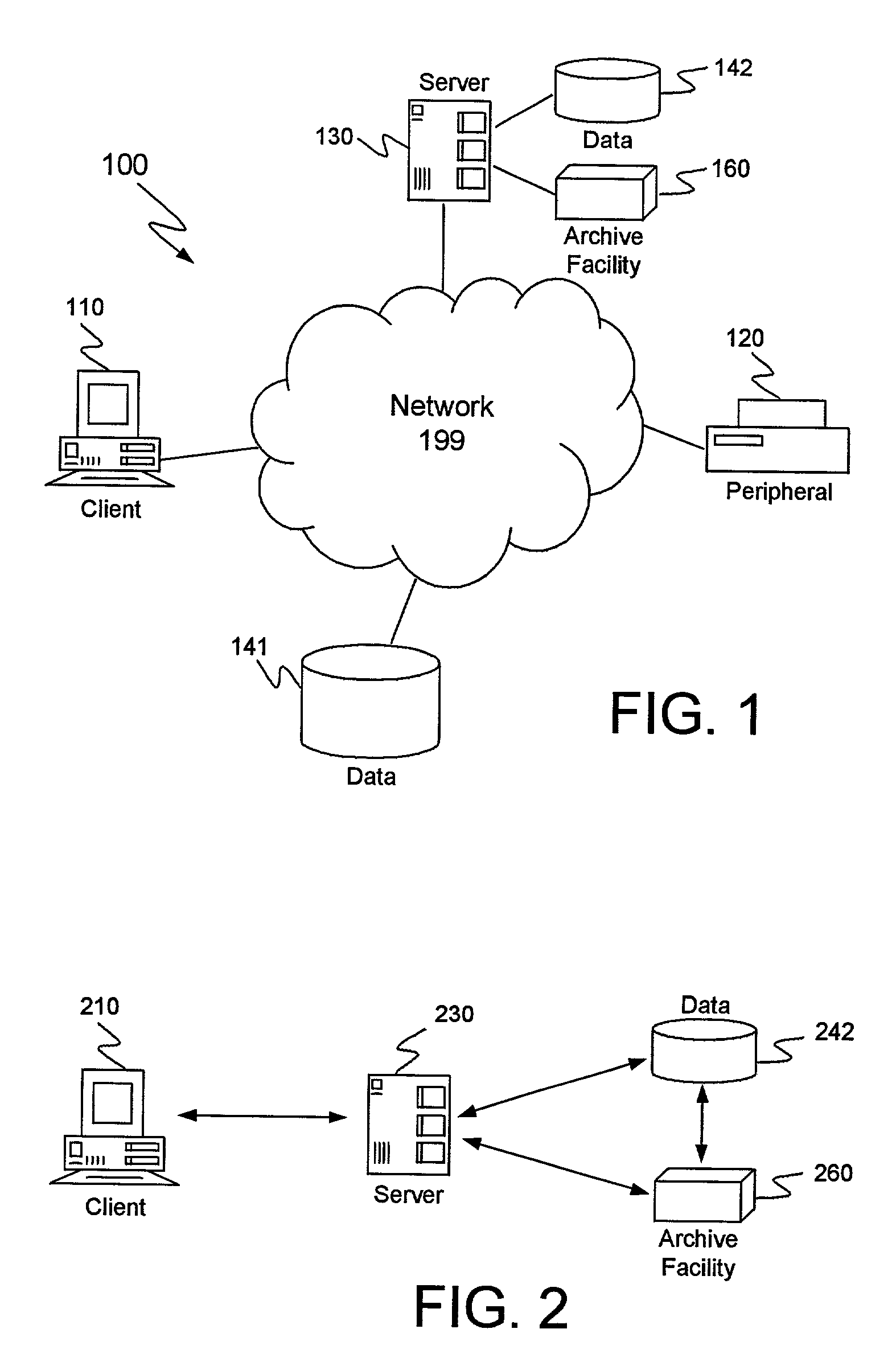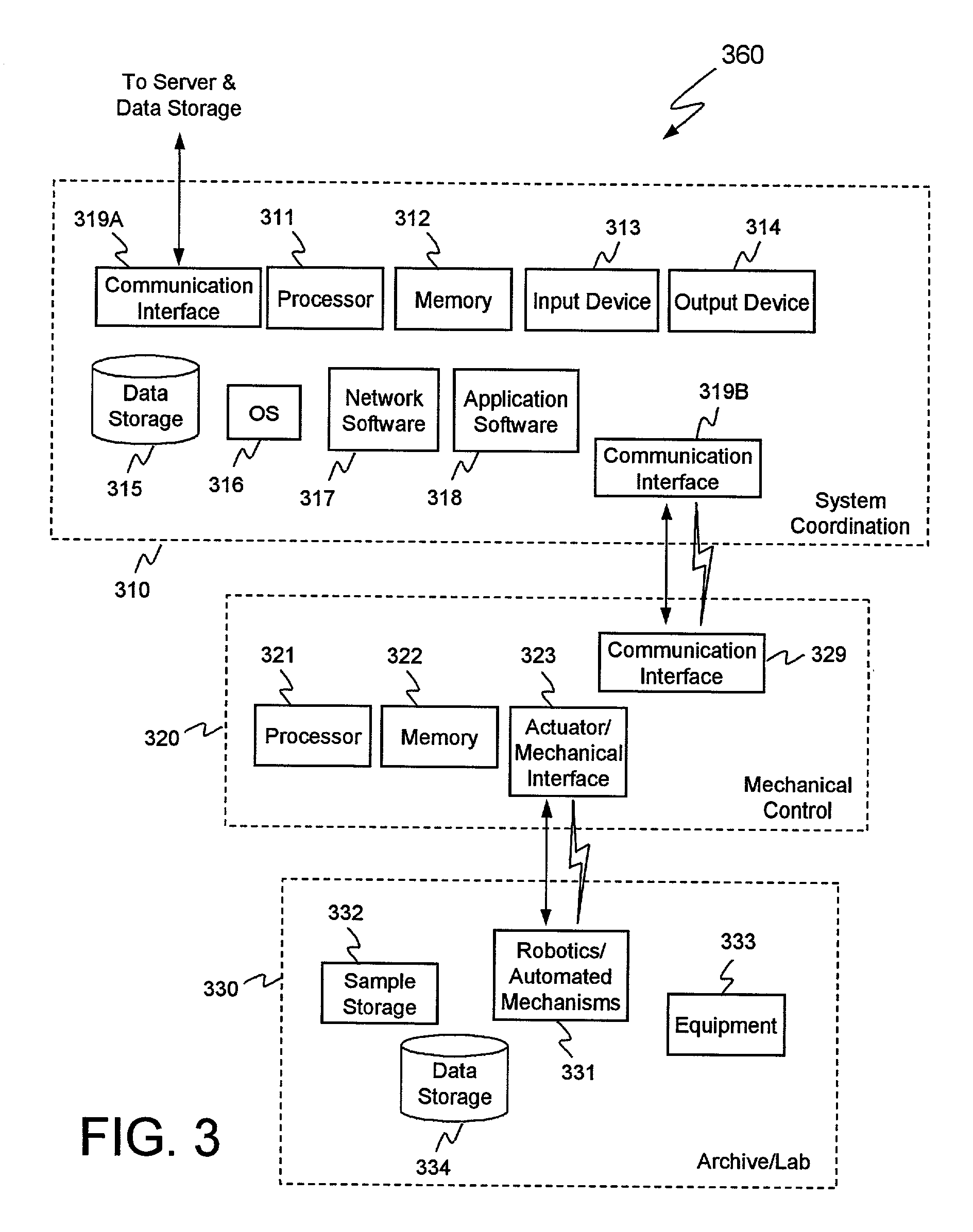Apparatus, system, and method of archival and retrieval of samples
- Summary
- Abstract
- Description
- Claims
- Application Information
AI Technical Summary
Benefits of technology
Problems solved by technology
Method used
Image
Examples
Embodiment Construction
[0079]Turning now to the drawings, FIG. 1 is a simplified block diagram illustrating one embodiment of an automated sample archival and retrieval system. In the exemplary FIG. 1 embodiment, system 100 generally comprises one or more remote computers or terminals, such as network client 110, coupled to one or more servers, such as server 130, via a communications network 199. System 100 may also comprise data storage media and peripheral equipment, represented by reference numerals 141 and 120, respectively.
[0080]For clarity, only one server 130 and one client 110 have been depicted in FIG. 1. Those of skill in the art will appreciate that the arrangement illustrated in FIG. 1 is presented for illustrative purposes only, and that system 100 may be implemented with any number of additional servers, clients, or other components; the number and variety of each device coupled to network 199 may vary in accordance with system requirements. In some embodiments, the functionality of one dev...
PUM
| Property | Measurement | Unit |
|---|---|---|
| Structure | aaaaa | aaaaa |
| Mechanical properties | aaaaa | aaaaa |
| Biological properties | aaaaa | aaaaa |
Abstract
Description
Claims
Application Information
 Login to View More
Login to View More - R&D
- Intellectual Property
- Life Sciences
- Materials
- Tech Scout
- Unparalleled Data Quality
- Higher Quality Content
- 60% Fewer Hallucinations
Browse by: Latest US Patents, China's latest patents, Technical Efficacy Thesaurus, Application Domain, Technology Topic, Popular Technical Reports.
© 2025 PatSnap. All rights reserved.Legal|Privacy policy|Modern Slavery Act Transparency Statement|Sitemap|About US| Contact US: help@patsnap.com



